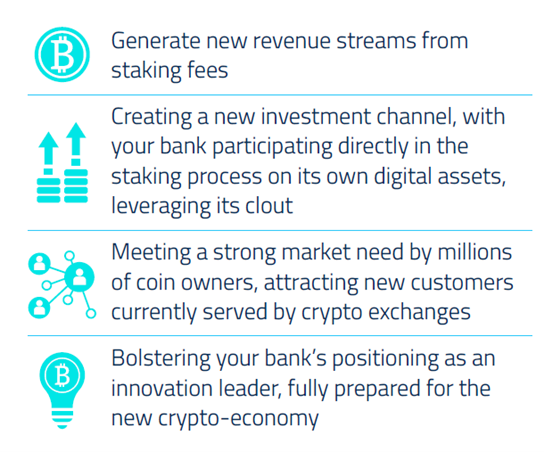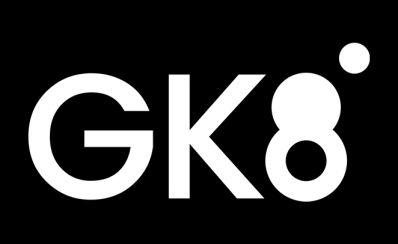Our Blog and Media Coverage

Staking 101: How can your bank earn interest on Crypto?
- Articles

On top of saving millions in losses due to potential cyberattacks and reputational damage, implementing GK8’s end-to-end platform can help your bank create new revenue streams and benefit from the exponential growth in blockchain-based activities.
The most basic service that bank can offer customers is crypto custody: we’ll protect your precious digital assets for a fee. A more effective way to leverage these assets is in staking (both as a direct investment by the bank and as a service offered to customers) . Here’s a quick guide of what staking is, and how you bank can benefit from it:
What exactly is staking?
Staking is the process in which users participate in validating other blockchain transactions, in return for a monetary reward. This validation process, also called Proof of Stake, is an alternative to the work conducted by individual miners who compete in approving each block of transactions before it’s inserted to the blockchain (called “proof of work”).
How does staking work?
Owners of cryptocurrency can lock-in a certain amount of their coins as collateral (or “stake”) for a pre-set time frame, competing with each other on the Staking reward. At particular intervals, the crypto protocol assigns one participant to validate the next block against his/her stake. Typically, the probability of being selected for the validation process is proportional to the size of the stake that is locked in. Once the block is validated, the participant receives a percentage of the stake as a reward.
Who can participate in the staking process?
In essence, anyone with a minimum-required balance of a specific cryptocurrency can use it as collateral, to enable other transactions to be added to the next block. For example, Staking on Ethereum 2.0 requires a minimum stake of 32 Ether during publishing time (worth approx. $36,000, as of Mid-January). Rewards vary based on size of the stake and the duration of the lock-in but are typically around 12% annually. For the person involved at the staking process, it’s an effortless way of leveraging digital funds to create new income – quite similarly to gaining interest on a traditional savings account (only with much higher return rates…)
By offering Staking, your bank can establish both immediate and long-term benefits:

How can GK8 enable your bank to benefit from Staking?
Individual users typically can’t offer their stake directly to the blockchain – they rely on a financial institution which holds their coins to do so. In addition, the infrastructure required to deliver a secure staking process is complex. GK8’s enables staking as a built-in feature in our end-to-end custody platform, without requiring any further investments or development efforts from the bank’s end.
The digital assets used in GK8’s Staking process are managed through the company’s patented air-gapped Cold Vault, which remains 100% offline, with no exposure to potential attack vectors. These funds can be covered by insurance of up $500M, offered exclusively to GK8 customers by insurance giant Aon UK. GK8 already supports additional popular staking protocols, and as digital assets become mainstream, we anticipate that banks will start capitalizing on this opportunity and leverage digital assets to create new revenue streams.





